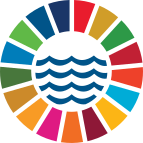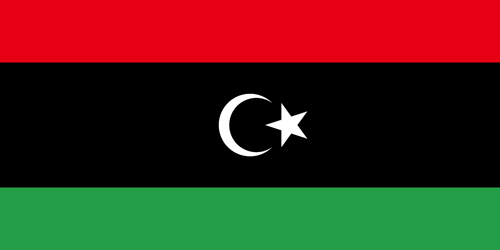Second Edition of the ACCOBAMS Survey Initiative – A Step Further Towards Advancing Cetacean Conservation and Regional Biodiversity Assessment for the Mediterranean and Black Seas, Supporting Conservation and the Blue Economy
Agreement on the Conservation of Cetaceans of the Black Sea, Mediterranean Sea and contiguous Atlantic area (ACCOBAMS)
(
Intergovernmental organization
)
#OceanAction57805
Description
The Agreement on the Conservation of Cetaceans of the Black Sea, Mediterranean Sea, and Contiguous Atlantic Area covers critical habitats for a wide range of cetaceans and other marine megafauna, including sea turtles, seabirds, and fish species critical to the region’s biodiversity. Many of these species are considered threatened under the IUCN Red List due to mounting pressures from human activities, including overfishing, pollution, underwater noise, and habitat degradation. In response, the ACCOBAMS Agreement works to enhance conservation measures, improve scientific understanding, and foster international collaboration to protect cetaceans thereof impacting the broader marine ecosystem.
Building on the success and significant impact of the first ACCOBAMS Survey Initiative (ASI) (2018-2023), ACCOBAMS Parties adopted a Long-Term Monitoring Programme in 2023, committing to a basin-wide approach for tracking cetaceans and assessing marine biodiversity and ecosystem health. The first ASI established an invaluable baseline of knowledge, assessing cetaceans species distribution and abundance, identifying key habitats, and assessing conservation status, while also documenting marine litter and other human-induced pressures. These findings have directly informed the development of effective management measures and conservation policies.
ASI II will continue this essential work, generating new, scientifically robust data on cetaceans, other marine species, and human pressures. During the summers of 2026 and 2027, large-scale international surveys will use aerial and vessel-based observations, along with passive acoustic monitoring, to assess cetacean populations, track environmental changes, and evaluate conservation measures.
The key Objectives of ASI II include:
• Monitoring Cetaceans & Other Marine Species: Tracking the distribution, abundance, and trends of cetaceans, sea turtles, seabirds, elasmobranchs and pelagic fish
• Assessing Human Pressures: Providing data on pollution, underwater noise, fisheries interactions, ship strikes, and other anthropogenic threats.
• Early Detection of Environmental Changes: Identifying population declines, shifts in species distribution, and emerging threats, including climate change impacts.
• Capacity Building: Strengthening the expertise of local and national actors, authorities, and stakeholders to implement data-driven conservation strategies.
• Supporting Regional Cooperation: Enhancing international collaboration to align conservation efforts, policy frameworks, and marine spatial planning.
• Informing Adaptive Management Strategies: Delivering reliable data and information to refine conservation measures in response to changing environmental conditions. conditions and human activities.
ASI II aligns with major international conservation commitments, including the Convention on Migratory Species, the Convention on Biological Diversity, the EU Marine Strategy Framework Directive, and the Barcelona Convention (UNEP/MAP). The initiative will also provide essential data for marine spatial planning, contributing to sustainable resource management and a resilient Blue Economy.
As the urgency to conserve and sustainably manage marine ecosystems grows, ASI II emerges as a pivotal initiative for the Mediterranean and Black Seas. By taking a multi-species, multi-threat approach, ASI II will not only advance cetacean conservation but also provide vital knowledge for protecting other threatened marine species and ecosystems. Through continued collaboration, ASI II will support evidence-based management, mitigate human-induced threats, and foster a healthier, more resilient marine environment for future generations.
The 24 Contracting Parties to the ACCOBAMS (Governements)
SDGS & Targets
Goal 14
Conserve and sustainably use the oceans, seas and marine resources for sustainable development
14.1
By 2025, prevent and significantly reduce marine pollution of all kinds, in particular from land-based activities, including marine debris and nutrient pollution
14.1.1
(a) Index of coastal eutrophication; and (b) plastic debris density
14.2
By 2020, sustainably manage and protect marine and coastal ecosystems to avoid significant adverse impacts, including by strengthening their resilience, and take action for their restoration in order to achieve healthy and productive oceans
14.2.1
Number of countries using ecosystem-based approaches to managing marine areas
14.3
Minimize and address the impacts of ocean acidification, including through enhanced scientific cooperation at all levels
14.3.1
14.4
By 2020, effectively regulate harvesting and end overfishing, illegal, unreported and unregulated fishing and destructive fishing practices and implement science-based management plans, in order to restore fish stocks in the shortest time feasible, at least to levels that can produce maximum sustainable yield as determined by their biological characteristics
14.4.1
14.5
By 2020, conserve at least 10 per cent of coastal and marine areas, consistent with national and international law and based on the best available scientific information
14.5.1
14.6
By 2020, prohibit certain forms of fisheries subsidies which contribute to overcapacity and overfishing, eliminate subsidies that contribute to illegal, unreported and unregulated fishing and refrain from introducing new such subsidies, recognizing that appropriate and effective special and differential treatment for developing and least developed countries should be an integral part of the World Trade Organization fisheries subsidies negotiation
14.6.1
Degree of implementation of international instruments aiming to combat illegal, unreported and unregulated fishing
14.7
By 2030, increase the economic benefits to Small Island developing States and least developed countries from the sustainable use of marine resources, including through sustainable management of fisheries, aquaculture and tourism
14.7.1
Sustainable fisheries as a proportion of GDP in small island developing States, least developed countries and all countries
14.a
Increase scientific knowledge, develop research capacity and transfer marine technology, taking into account the Intergovernmental Oceanographic Commission Criteria and Guidelines on the Transfer of Marine Technology, in order to improve ocean health and to enhance the contribution of marine biodiversity to the development of developing countries, in particular small island developing States and least developed countries
14.a.1
14.b
Provide access for small-scale artisanal fishers to marine resources and markets
14.b.1
Degree of application of a legal/regulatory/policy/institutional framework which recognizes and protects access rights for small‐scale fisheries
14.c
Enhance the conservation and sustainable use of oceans and their resources by implementing international law as reflected in United Nations Convention on the Law of the Sea, which provides the legal framework for the conservation and sustainable use of oceans and their resources, as recalled in paragraph 158 of "The future we want"
14.c.1
Number of countries making progress in ratifying, accepting and implementing through legal, policy and institutional frameworks, ocean-related instruments that implement international law, as reflected in the United Nations Convention on the Law of the Sea, for the conservation and sustainable use of the oceans and their resources
SDG 14 targets covered
| Name | Description |
|---|---|
| 14.a | Increase scientific knowledge, develop research capacity and transfer marine technology, taking into account the Intergovernmental Oceanographic Commission Criteria and Guidelines on the Transfer of Marine Technology, in order to improve ocean health and to enhance the contribution of marine biodiversity to the development of developing countries, in particular small island developing States and least developed countries |
Deliverables & Timeline
Resources mobilized
Partnership Progress

Feedback
Action Network

Timeline
Entity
SDGs
Other beneficiaries
Ocean Basins
Communities of Ocean Action
More information
Countries





















Headquarters
Contact Information
Maylis, Executive Secretary

